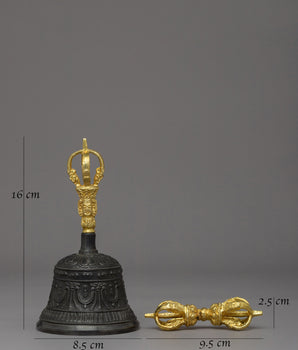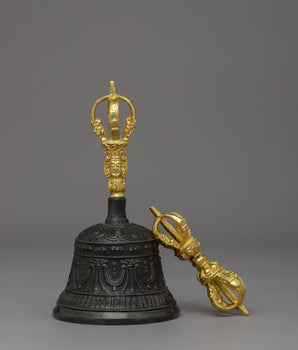

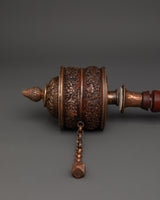
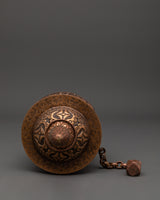

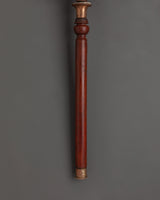
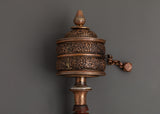
Wooden Handle Tibetan Prayer Wheel | Sacred Buddhist Mantra Spinner
Wooden Handle Tibetan Prayer Wheel | Traditional Tibetan Handheld Meditation Tool
--------------------------------------------------------
Size: 38.5cm (Height) x 9.5cm (Width)
Weight: 0.47kg
Materials: Oxidized Copper Body, Wooden Body
--------------------------------------------------------
About our Prayer Wheel
This 38.5cm tall wooden handle Tibetan prayer wheel, measuring 9.5cm in width and weighing 0.47kg, is a stunning example of spiritual craftsmanship. The main body is constructed of oxidized copper and features the holy mantra "Om Mani Padme Hum," while the grip is carved from smooth, polished wood. This prayer wheel is designed to be easy to use, fitting nicely in the hand, making it both practical and meaningful for personal rituals and spiritual practices.
In Tibetan Buddhism, prayer wheels are used to gather insight and merit, purge negative energies, and promote compassion. It is believed that spinning the wheel clockwise amplifies the benefits of the chant within, benefiting all beings. This prayer wheel is often used for mantra recitation and meditation. Spinning this wheel while chanting or silently meditating is thought to release heavenly benefits and cleanse negative karma.
Introduction to Prayer Wheel
A prayer wheel is cylindrical on a spindle and is used in Tibetan Buddhism. It is typically inscribed with the mantra "Om Mani Padme Hum" and rotated by hand as a form of spiritual practice and to accumulate merit. Spinning the wheel is believed to have the same spiritual benefits as verbally reciting the mantra. The use of prayer wheels is widespread in Tibetan Buddhism and has spread to other cultures.
How does the Buddhist Prayer Wheel benefit us?
The benefits associated with rotating the wheel are numerous. It promotes knowledge, compassion, and bodhicitta in the practitioner and improves siddhis (spiritual powers such as clairvoyance, precognition, etc.). The practitioner can repeat the mantra as often as possible while the wheel is rolling, maintaining a calm, meditative attitude. A Tibetan Buddhist tradition holds that after a practice session, one should dedicate any acquired merits to the benefit of all sentient beings. Then three times Om Ah Hum. This is usually among Tibetans after finishing any Buddhist practice, including the prayer wheel exercise.
How do you set up your own Buddhist Shrine?
• Find a clean, quiet, and uncluttered spot
• Set up an altar table and cover it with an altar cloth that calls to you
• Place your sacred item at the center








